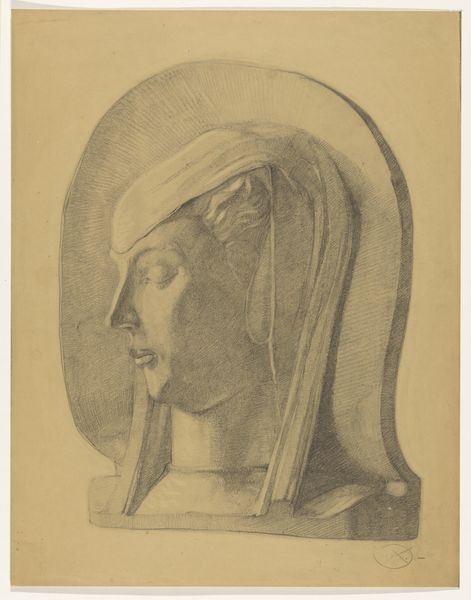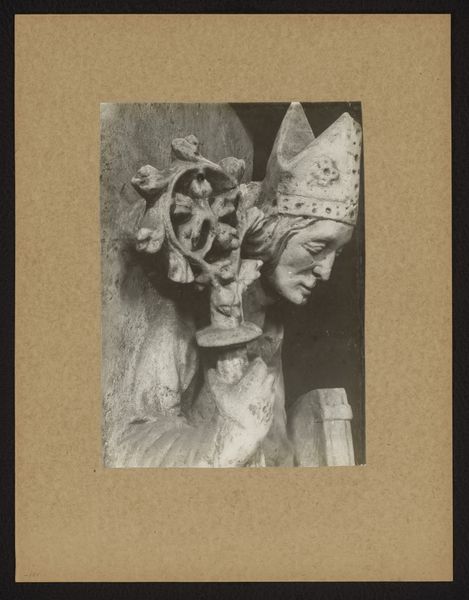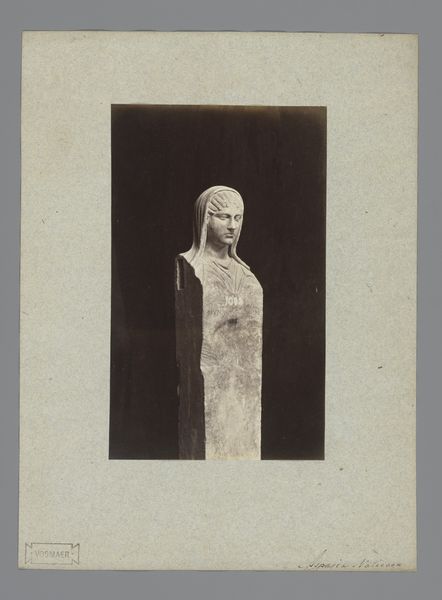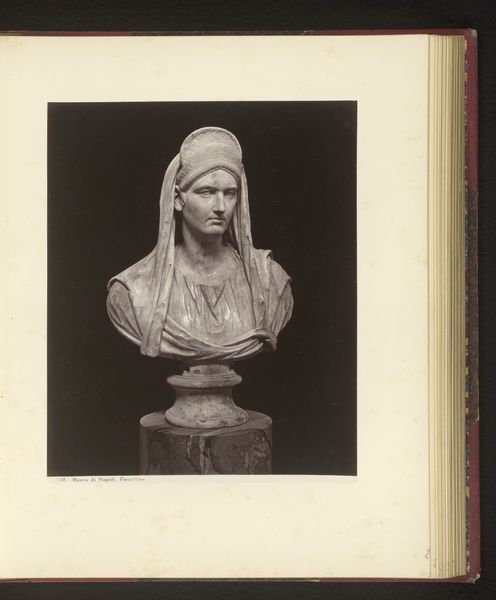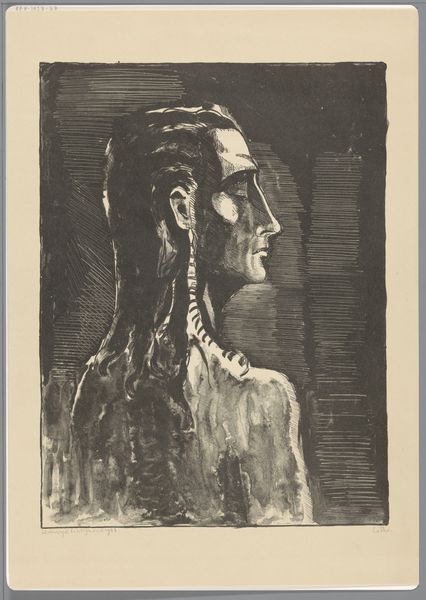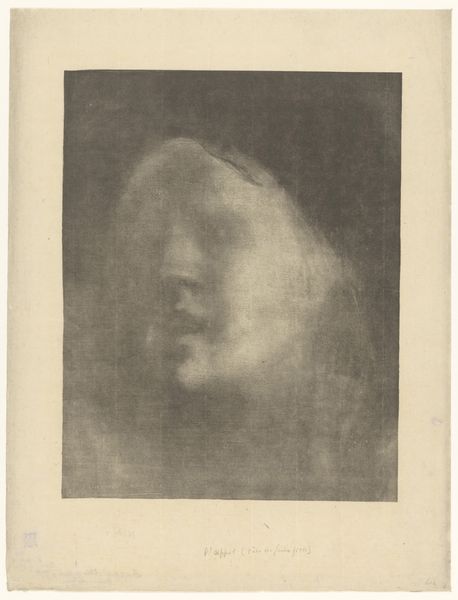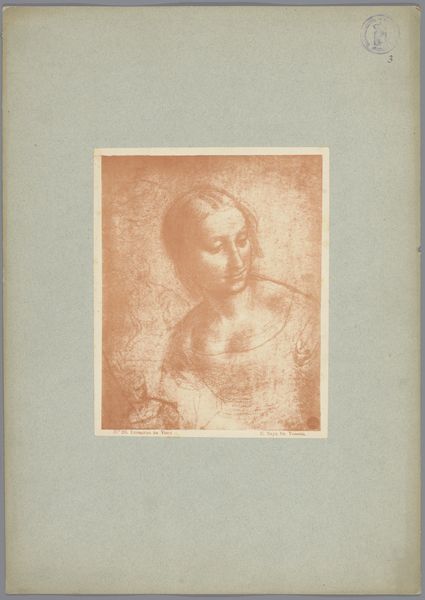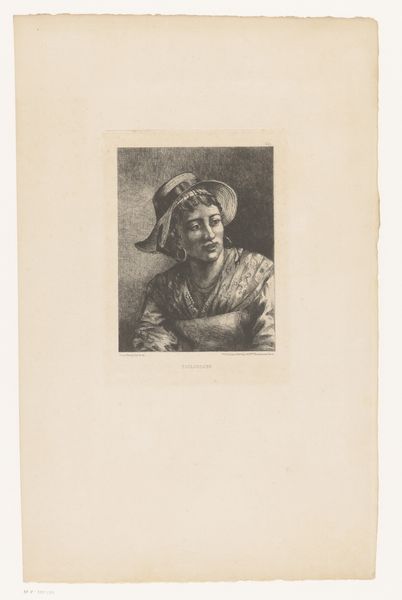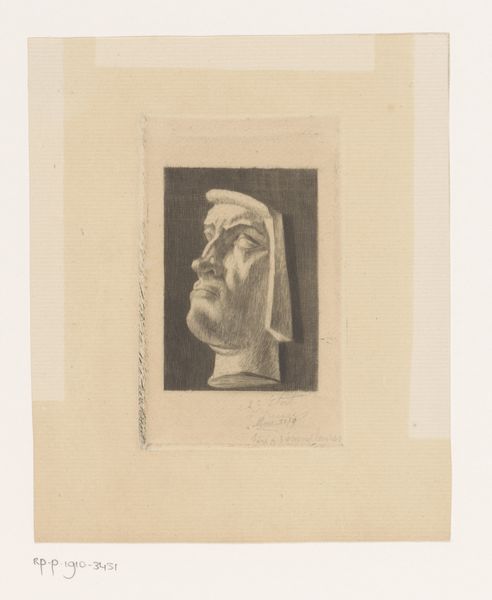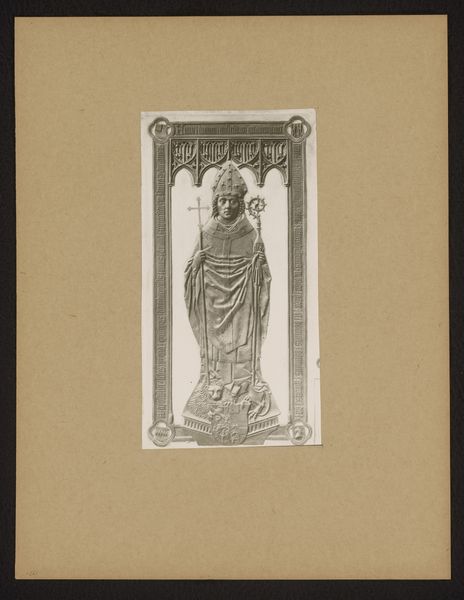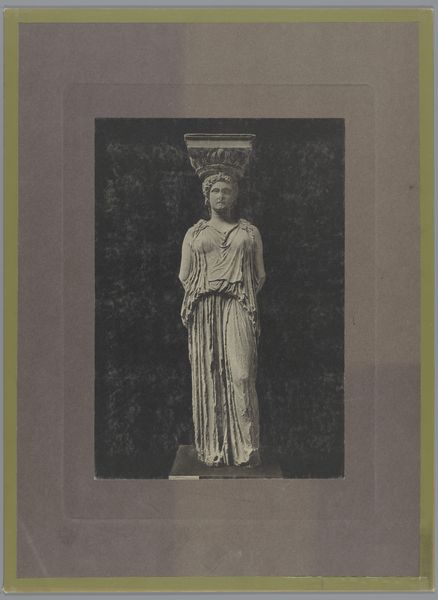
photography, sculpture
#
portrait
#
medieval
#
sculpture
#
photography
#
sculpture
Dimensions: height 225 mm, width 164 mm
Copyright: Rijks Museum: Open Domain
Curator: This captivating image, created sometime between 1900 and 1920, presents a photographic portrait of a sculpture of Friedrich I von Hohenlohe located within the Bamberg Cathedral. Editor: The weight of the world rests heavily on that stone face. The downturned gaze, the rigid lines—it's almost oppressively austere, but fascinating. It feels like I’m peering into the mind of a medieval ruler, struggling with earthly concerns even in stone. Curator: It's interesting you say "earthly concerns" because in the context of the Bamberg Cathedral, Friedrich's image, meticulously captured in this photographic print, merges worldly power with religious iconography. Consider how the cathedral, a locus of spiritual authority, becomes the stage for memorializing earthly figures, hinting at the church’s power in secular matters. Editor: Ah, a sanctified strongman, then. It makes me think about how we still build monuments—visual mnemonics, loaded with symbolic weight—and try to freeze figures in time. Do you think this photographic rendition was intended as a democratization of sorts, to spread the influence beyond the cathedral walls? Curator: The circulation of photographs certainly played a role in broadening accessibility to cultural artifacts. Furthermore, photographs themselves became a sort of relic. What strikes me, too, is how photography as a medium can, even unintentionally, strip away the imposing grandiosity of the original. The artist could, perhaps, want us to meet Friedrich on more relatable, intimate terms. Editor: It’s funny you say "intimate". Even rendered in grayscale, stone takes on a new kind of warmth. We’re forced to reconcile Friedrich's potential humanity with his enduring symbol of authority. Maybe art’s secret magic trick is humanization, whether of a king or a gargoyle. Curator: Indeed. Ultimately, this artwork compels us to ponder the interplay between historical memory, photographic representation, and the persistent human need to capture and preserve. Editor: Which might be just another way of saying: even emperors feel the sands of time. Well put! Thanks for unraveling some of this medieval mystery for me.
Comments
No comments
Be the first to comment and join the conversation on the ultimate creative platform.
